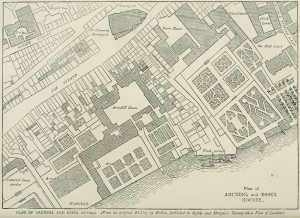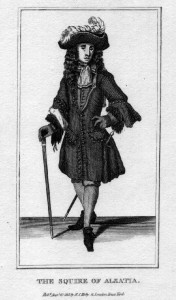To round off this series of posts on canting language, here are links to those pre-Victorian cant, slang and jargon vocabularies freely available on the internet. More are to be found in various subscription archives; these are not listed here both because they are not open to the general public, and because it is important to show that there are alternatives. The digital vaults should not be the first resort, as much for ethical as economic reasons.
The difficulty with using Archive.org and Google Books, from whence much of the material below can be obtained, is that the metadata, being generated by machine, is generally patchy and frequently erroneous. This makes it all the more important that what the historian does in the course of writing history – compile reference material – is made public, for all to benefit from, as well as allowing the story to be checked.
Three other resources of note are: Pascal Bonenfant’s database of cant, drawn from three dictionaries dating from 1737, 1811 and 1819; LEME, the Lexicons of Early Modern English, is an ingenious resource, although partly behind a paywall so of limited use to non-subscribers; and finally, I have started a list of canting dictionaries through the facilities provided by the Open Library.
Finally, throughout this series of posts, I have drawn on the first volume of Julie Coleman’s excellent History of Cant and Slang Dictionaries.
Thomas Harman, A caveat or warning for common cursetors, vulgarly called vagabonds, (1567). The first of the glossaries, compiled through interrogating suspected rogues. A reprint from 1814 is available from Archive.org. Open Library.
Samuel Rowland, Martin Mark-all Beadle of Bridewell, (1610). In Volume 2 of his collected works. Open Library.
Thomas Shadwell, Glossary to The Squire of Alsatia, (1688). Subject of my previous post.
B.E., Gent., A new dictionary of the terms ancient and modern of the canting crew, in its several tribes, of gypsies, beggers, thieves, cheats, &c. with an addition of some proverbs, phrases, figurative speeches, &c. First published in 1698, the Internet Archive has a scan of an 1899 reprint. Open Library.
Nathan Bailey, Canting Dictionary, (1736), extracted from Bailey, The New Universal Etymological Dictionary, (1727). Transcribed at From Old Books; the fifth edition of the full dictionary is available via Google.
Bampfylde-Moore Carew, The life and adventures of Bampfylde-Moore Carew. Picaresque account of the ‘King of the Beggars’, the edition of 1750 contained a canting glossary. Archive.org. Open Library.
Francis Grose, Dictionary of the Vulgar Tongue, first published 1785 and frequently reprinted and re-edited. Transcribed at From Old Books and also available at Gutenberg and Archive.org. Open Library


